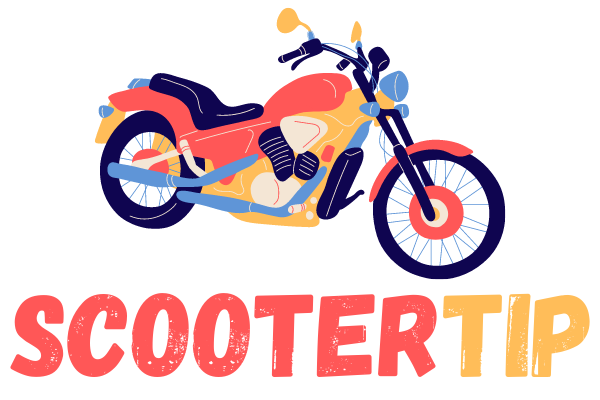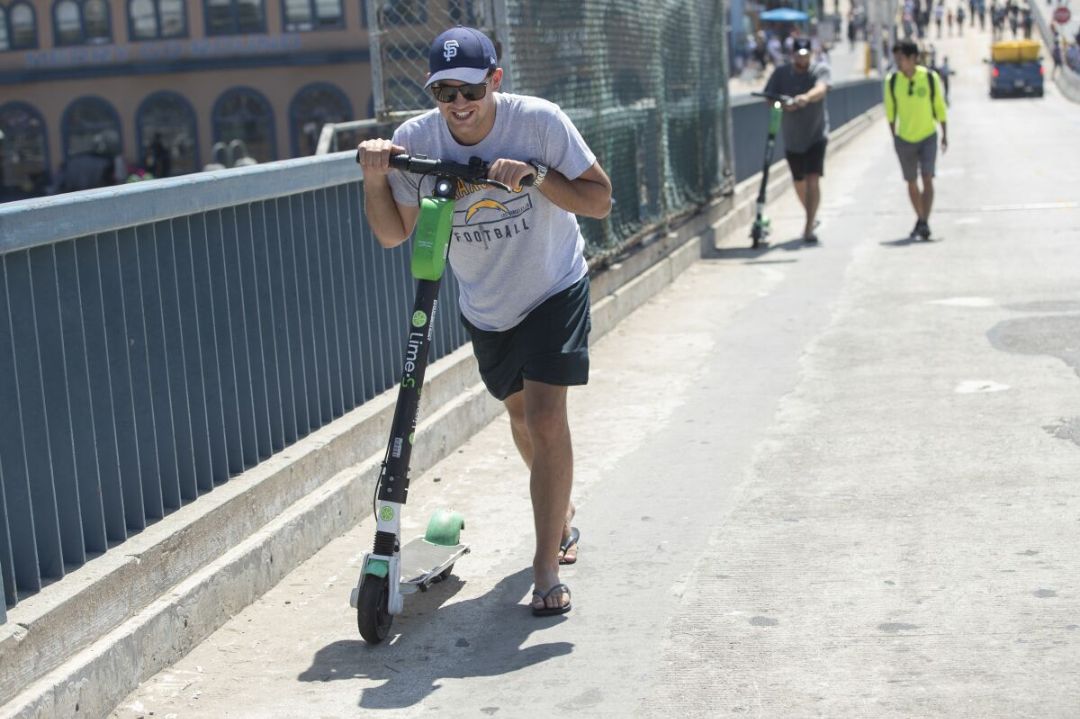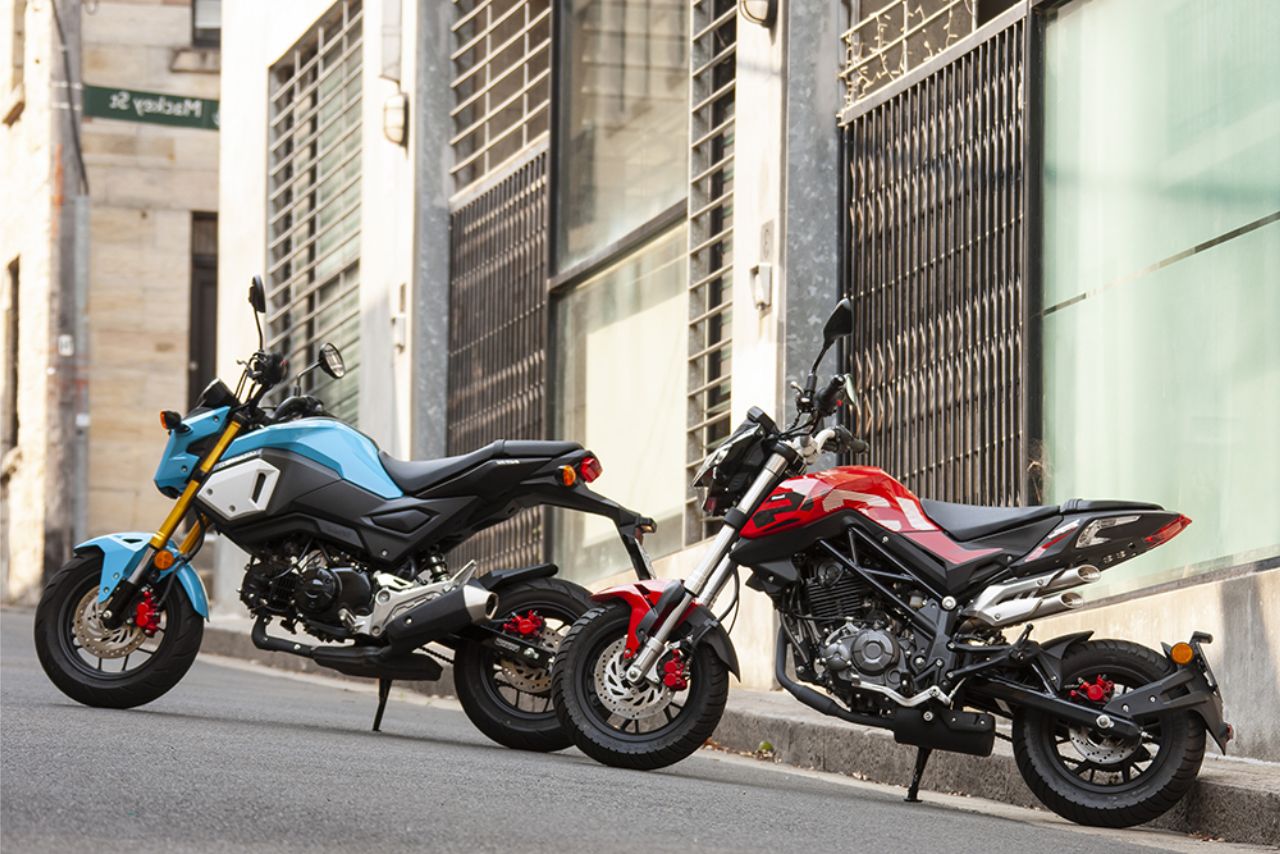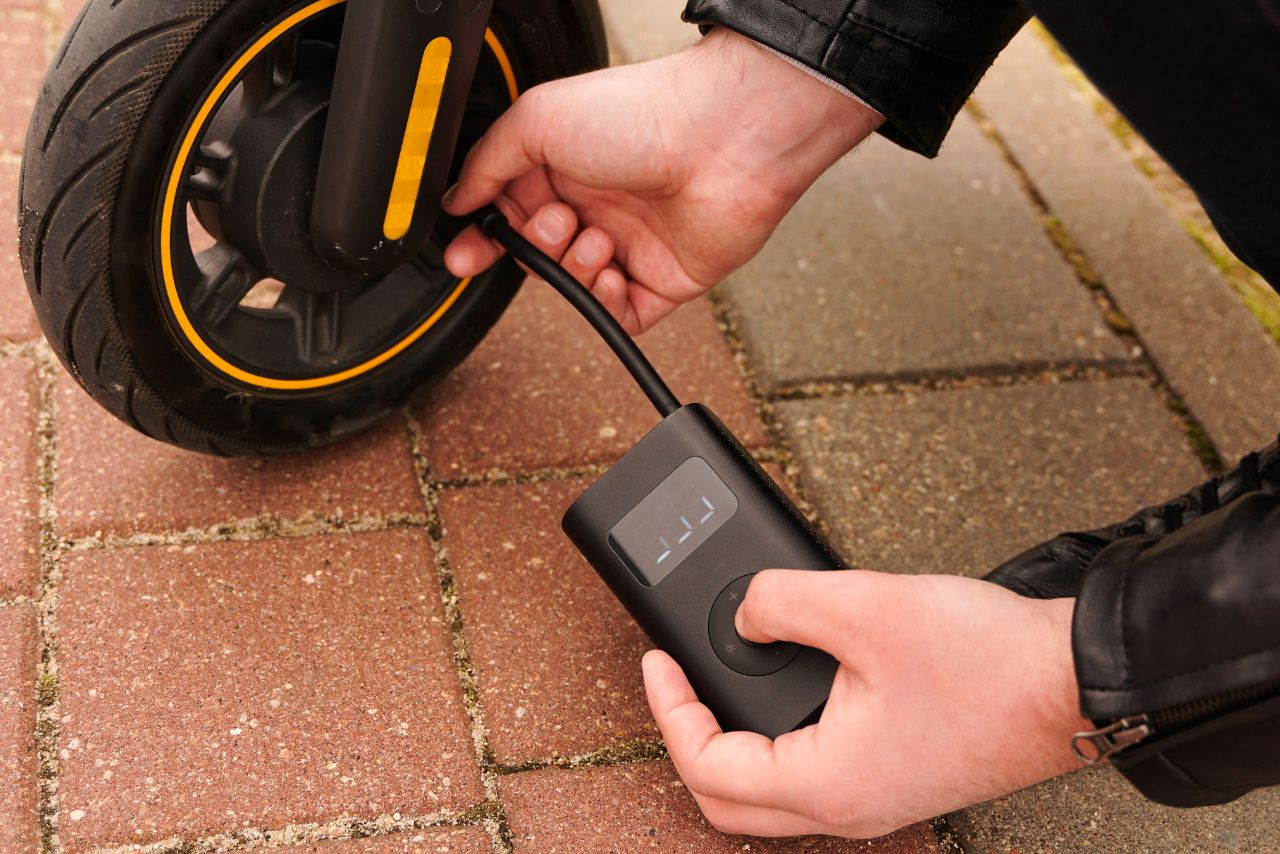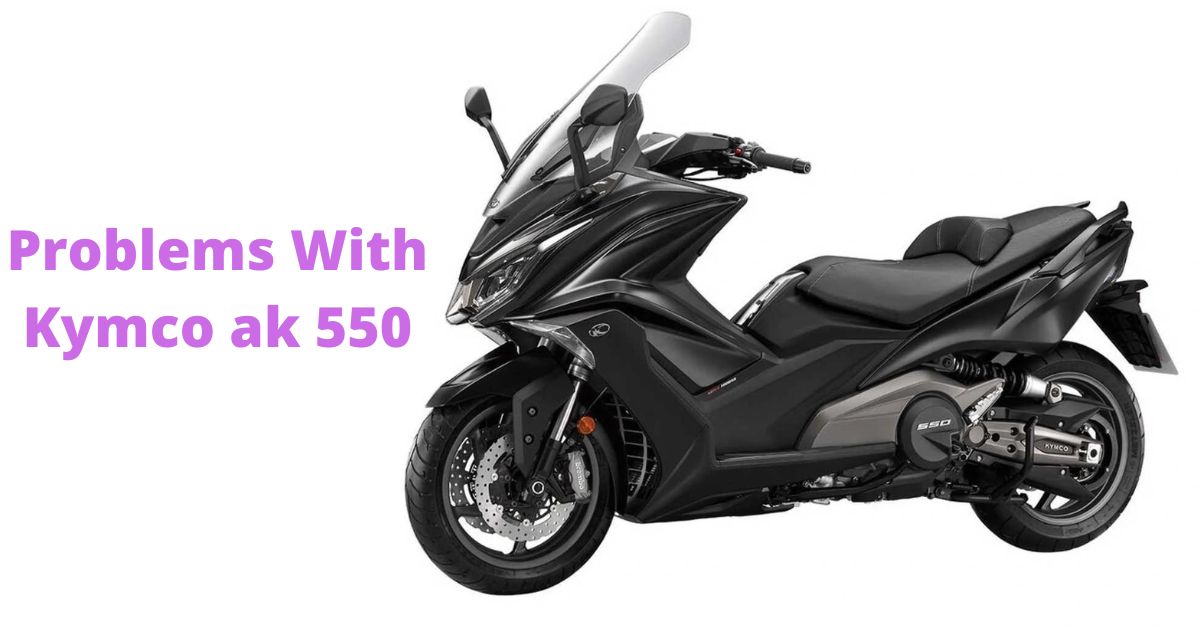Why Does Electric Scooter Shuts Off While Riding? The phenomenon of an electric scooter shutting off while riding is a result of the power-regulating components within the device operating outside of their specified parameters.
This can be caused by a variety of factors, including insufficient battery voltage, excessive current draw from the motor, or an asymmetrical load on the drive train.
As a result, these components communicate with one another to shut down the system in order to mitigate any damage that may occur due to prolonged operation outside of their designed tolerances.
Electric scooters are becoming increasingly popular due to their portability and convenience. However, they can be prone to sudden shutdowns while in use, leaving riders stranded and frustrated.
There are a few common causes of electric scooter shutdowns that riders should be aware of.
Understanding these issues can help riders avoid them in the future and keep their scooter running smoothly.
Why Does Electric Scooter Shuts Off While Riding? (Most Common Problems!)
Riding an electric scooter is a great way to get around, but occasionally they can shut off while riding. If this has happened to you, you’re not alone.
Many riders have encountered this issue and it can be caused by a variety of different reasons.
Here are most common Problems that’s why electric scooter shuts off while riding:
1: Electric Scooter Keeps Cutting Out:
One of the most common problems with electric scooters is that they keep cutting out. This can be caused by a variety of issues, including worn out batteries, defective motors, and even problems with the wiring.
2: Electric Scooter Won’t Start:
Another common problem is that electric scooters won’t start. This can be caused by a variety of different issues, including drained batteries, blocked engines, and faulty wiring.
3: Motor Runs But Scooter Does Not Move:
Another common problem is that the motor runs but the scooter doesn’t move. This can be caused by a variety of different issues, including blocked engines, defective wiring, and worn out batteries.
4: Electric Scooter Shuts Down Suddenly:
Finally, another common problem is that electric scooters shuts down suddenly. This can be caused by a variety of different issues, including worn out batteries, blocked engines, and defective wiring.
5: Vehicle Runs Slowly:
If your electric scooter is running slowly, the first thing you should do is check the battery to make sure it’s fully charged and properly connected.
If the battery is fine, but the vehicle is running slowly, it may be due to a blocked engine or other issues with the motor. In this case, you’ll need to take your scooter in for repairs.
6: The Speed Controller May Faulty:
A faulty speed controller can cause a range of problems for your vehicle, including difficulty starting the engine, poor acceleration and deceleration, and even stalling while driving.
One of the most common reasons for a faulty speed controller is wear and tear over time.
As this component is responsible for regulating the flow of fuel to the engine, it can become damaged or worn out from constant use.
7: Little Or No Acceleration:
One common reason for slow acceleration is a clogged air filter. Over time, dirt and debris can accumulate in the filter and restrict the airflow into the engine.
This results in reduced power output and slower acceleration. To solve this problem, you need to clean or replace your air filter regularly.
Another possible cause of slow acceleration is a worn-out drive belt. The drive belt connects the engine to the wheels of your scooter and helps transfer power from one component to another.
6: Scooter Only Runs At Partial Throttle:
One potential cause of a scooter that only runs at partial throttle is an air leak in the intake system. This could be caused by a cracked or loose hose or a damaged gasket.
Another possible cause is clogged fuel jets or dirty carburetor components. It’s also worth checking the spark plug to ensure it’s clean and functioning properly.
7: Scooter Only Runs For A Short Amount Of Time:
Nothing can be more frustrating than your scooter suddenly stopping after only running for a short amount of time. This issue could arise due to various reasons.
One of the primary reasons why your scooter is only running for a short amount of time is because of fuel-related issues. If you have not refueled your scooter in a while, it may run out of fuel quickly and stop abruptly.
Another possibility is if there’s something wrong with the carburetor or air filter; it can cause an imbalance in the air-to-fuel ratio leading to engine stalling.
8: Broken Solder Joint Around The Battery:
A broken solder joint around the battery can be a frustrating issue for any electronics enthusiast. This problem typically occurs when the solder holding the battery in place becomes weak or brittle, and eventually breaks away from the circuit board.
When this happens, your device may fail to turn on or experience intermittent power issues.
Fortunately, repairing a broken solder joint around the battery is a relatively simple process that requires only basic tools and knowledge of electronics.
To get started, you’ll need to remove any screws or clips holding your device’s case together. Once inside, locate the battery and look for any visible signs of damage or wear on the solder points.
9: Motor May Overheated :
Overheating can cause serious damage to the motor, so it is critical to identify the cause and take steps to prevent it from happening again.
First, turn off the power to the motor and let it cool down. Then, check for any signs of a clogged cooling system or a blocked air intake. If these are present, clear them out and make sure there is good airflow around the motor.
In addition, check for any loose or damaged wires which could be causing an increase in heat. If you find any of these, repair or replace them immediately.
Lastly, inspect the motor for any signs of corrosion or wear and tear which could be causing the overheating.
10: Fuse Or Circuit Breaker Keeps Blowing Out:
Electrical fires can occur when fuses or circuit breakers are constantly tripping due to an overload of electricity. This issue can also result in damage to appliances, electronics, and other electrical devices.
There are several reasons why your fuse or circuit breaker may be continuously blowing out. One common cause is overloading the circuit with too many devices or appliances plugged in at once.
Another potential culprit is outdated wiring that cannot handle modern electrical demands. Faulty electrical equipment, damaged wires, or loose connections could also be the source of the problem.
Why Does My Electric Scooter Turn On But Not Move?
If your electric scooter turns on but does not move, there could be several possible reasons. Firstly, check if the throttle is engaged and that the battery power is sufficient. It’s also possible that the motor, belt, or chain is damaged or stuck.
Additionally, the brake lever might be stuck in the brake position or the controller may be malfunctioning.
Diagnosing the problem may require a professional inspection or consultation with the manufacturer to determine if any repairs or replacement parts are necessary.
How To Fix These Scooter Problems?
These are some of the common problems that electric scooter riders can experience. By following these simple tips, you can help to ensure that your scooter runs smoothly and avoids costly repairs.
Step 1: Inspect Electrical Connections:
One of the first things you should do if your scooter is having problems is to inspect the electrical connections. This can help to identify problems with the battery, wiring, or other components.
Step 2: Check for Blown Fuses or Circuit Breakers:
If you are unable to find the source of the problem, it may be necessary to replace the fuse or circuit breaker. In this case, it is important to take preventative action by replacing the fuse or circuit breaker.
Step 3: Check for Cooling System Problems:
If your engine is overheating, it is important to check for any signs of a clogged cooling system or a blocked air intake.
If these are present, clear them out and make sure there is good airflow around the engine. In addition, check for any loose or damaged wires which could be causing an increase in heat.
Step 3: Inspect Motor And Belt:
Inspecting your motor and belt is an important step in the maintenance of your machine. To perform this task, you will need a flashlight, a pair of gloves, and a screwdriver.
Start by turning off the power to the machine, and then removing the access panel. Once this is done, take a look at the motor and belt, checking for any signs of wear or damage.
If you see any damage, it’s important to have it repaired or replaced as soon as possible.
Next, look for any loose wires or parts that may have come loose from the motor or belt.
Tighten any loose parts with a screwdriver and make sure that all connections are secure.
Step 4: Check Speed Limiter Setting:
A speed limiter is a great tool to help keep your vehicle running safely. It limits the maximum speed of your vehicle, so you don’t need to worry about driving too fast.
To ensure that your speed limiter is set correctly, it’s important to check it regularly. This guide will walk you through the process, step-by-step.
First, locate the speed limiter setting panel in the driver’s side of your vehicle. It will usually be located near the dashboard or on the steering wheel itself.
Once you’ve located it, you’ll need to adjust the settings to match your desired speed limit. Remember to be consistent and set it at the same speed each time.
Next, make sure that the speed limiter is turned on. This can be done by pressing the “on” button on the speed limiter setting panel.
Finally, check that the speed limiter is working properly by driving your vehicle at a moderate speed and ensuring that it does not exceed the limit you have set.
Step 5: Diagnose The Control Board:
First, start by checking the wiring for any loose connections, frayed wires, or corrosion. If there are any abnormalities, repair them and test the control board again.
Next, check to make sure all components are functioning correctly by testing each one individually. Then, inspect the circuit board for any signs of damage or corrosion.
If there are any signs of damage, replace the component before attempting to diagnose the control board further.
Finally, if all of the components are functioning correctly and there is no sign of damage or corrosion on the circuit board, test the control board itself.
Step 6: Diagnose The Battery:
To diagnose the battery, start by checking the voltage and capacity. If the voltage is below the minimum required level, then the battery may be exhausted and needs to be replaced.
Next, check to see if the battery is charging correctly. If it isn’t charging correctly, then there may be a problem with the charger or with the battery itself.
Finally, if all of these tests fail, it may be time to replace the battery.
Step 7: Check The Engine Oil And Filter:
One of the first things you should do when your electric scooter starts having problems is check the engine oil and filter. If there is evidence of oil or dirt on the valve cover, then it’s time to change the engine oil and filter.
This will help to prevent any damage to the engine and ensure that your machine is running optimally. Remember to change the engine oil and filter regularly to keep your machine running smoothly.
Why Does My Electric Scooter Cut Out When Accelerating?
There are a few things that you can do to help prevent your electric scooter from cutting out when accelerating. First, make sure that the battery is fully charged.
Second, keep the chain tensioned and clean. Finally, be sure to use the right gear ratio for your terrain.
Why Does My Scooter Shut Off While Idling?
The engine may be overheating, the oil may be low, or the air filter may be clogged.
In order to troubleshoot and fix the issue, start by checking the engine temperature and level of oil. If all else fails, you may need to replace the engine.
Conclusion: Why Does Electric Scooter Shuts Off While Riding?
Why Does Electric Scooter Shuts Off While Riding? By following these easy steps, you can diagnose and fix any problems with your electric scooter. Keep in mind that not all issues will require a full replacement of the control board or engine.
By following these steps, you’ll be able to keep your machine running smoothly and prevent any serious damage.
There are many reasons why your electric scooter might shut off while you’re riding. But with these tips, you’ll be able to fix most issues on your own!
FAQs
What Causes My Electric Scooter To Shut Off While Riding?
The most common causes of an electric scooter shutting off while riding are either a low battery or an issue with the motor or control board.
How Do I Check If My Battery Is Low?
You can check the voltage of your battery using a multimeter. If the voltage is below the minimum required level, then the battery may be exhausted and needs to be replaced.
How Do I Check If The Motor Or Control Board Is Malfunctioning?
If the battery is charged and in good condition, then you should check the motor and control board. Start by visually inspecting the components for any signs of corrosion or damage.
If all of the components are functioning correctly, then you can test the control board to see if there are any issues.
What Should I Do If I Cannot Find The Issue With My Electric Scooter?
If you cannot find the issue with your electric scooter, it is best to take it to a qualified technician for further diagnosis and repair.
A qualified technician will be able to identify and fix any issues that may be causing your electric scooter to shut off while riding.
